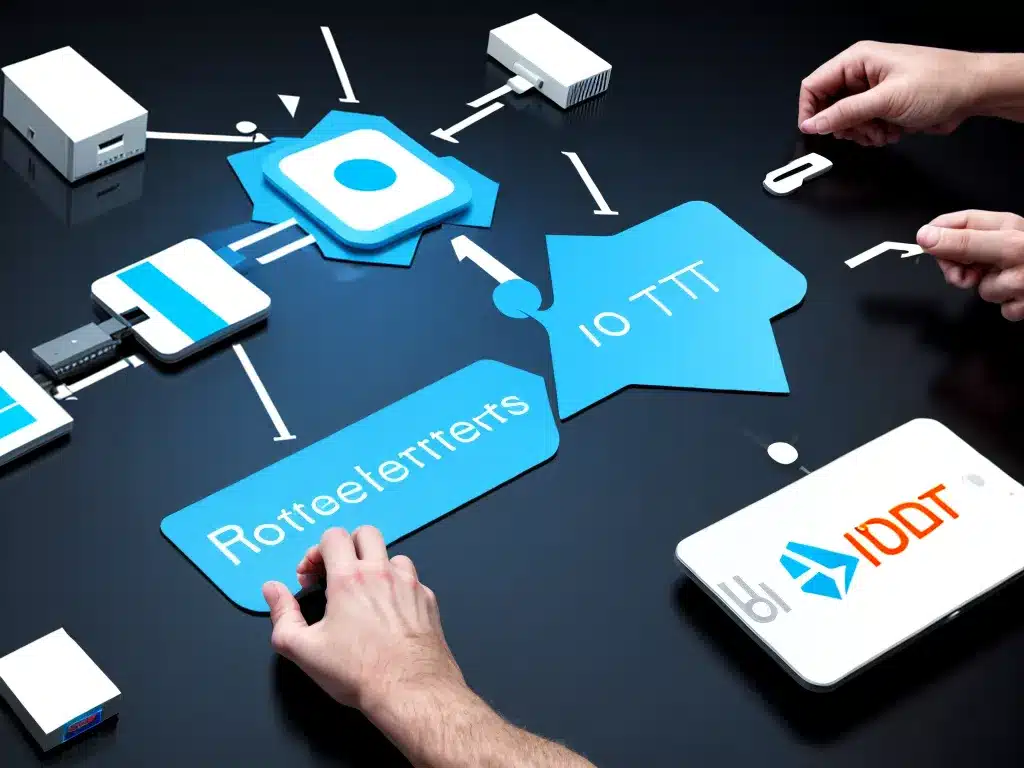IoT Device Management Challenges
The Internet of Things (IoT) connects physical devices and objects to the internet so they can collect and share data. This allows devices to be monitored and controlled remotely across networks. As the number of connected IoT devices grows exponentially, device management becomes increasingly complex and critical. Here are some of the main IoT device management challenges:
Lack of Standards
There is a lack of standards for IoT device protocols and data formats. With myriad devices from different vendors using proprietary technologies, it becomes difficult to have interoperability and a unified view of the device fleet.
Some key problems include:
-
Heterogeneous interfaces – Devices use different APIs and protocols like Bluetooth, ZigBee, Z-Wave, etc. This means more effort is needed to integrate various device types.
-
Data silos – Data from devices is in different formats. Aggregating and analyzing data across systems is challenging.
-
Vendor lock-in – Reliance on vendor-specific solutions leads to limited choices. Migrating to other platforms involves significant rework.
Industry bodies like the Open Connectivity Foundation are defining standards like the IoTivity framework to address these issues. But adoption remains limited.
Security Risks
IoT devices collect sensitive data and access critical systems. But many devices lack basic security features. This makes them soft targets for cyber attacks.
Some security issues plaguing IoT devices are:
- Weak passwords – Users fail to change default passwords which are easy to crack.
- Unencrypted communications – Data transmission happens over unsecured networks without encryption.
- Lack of authentication – Absence of device identity validation allows unauthorized access.
- Unregulated firmware updates – Security flaws remain unpatched due to infrequent or no firmware updates.
Addressing these requires deploying security controls like virtual private networks, authorization, and encryption across the IoT infrastructure.
Network Connectivity Issues
As IoT deployments scale, thousands of devices strain existing networks. Connectivity issues like limited bandwidth, coverage gaps, and latency problems become more common.
This affects critical capabilities like:
- Real-time monitoring – Delayed data impacts monitoring and control.
- Software updates – Failure to update devices remotely due to poor connections.
- Location tracking – Bluetooth and Wi-Fi have limited range for location tracking. Cellular and GPS add costs.
A mesh network architecture can help extend coverage. Low power Wide Area Networks (LPWANs) like Sigfox and LoRaWAN are gaining popularity.
Difficulty in Tracking Devices
Large distributed networks with mobile and dynamic devices make asset tracking difficult. Discovering all devices and their status becomes challenging.
- Blindspots in network coverage prevent device detection.
- Limited identifiers like serial numbers are not enough to uniquely identify devices.
- Mobile devices change locations and lose connectivity, dropping off the grid.
Using technologies like GPS, RFID tags and network scanning tools helps track devices. Maintaining a fleet database with unique device identifiers is also essential.
Complex Data Management
IoT devices generate tremendous amounts of data. Managing and deriving value from this data has its challenges.
- Data quality – Inaccurate data leads to wrong analysis and decisions.
- Unstructured data in different formats require normalization.
- Real-time processing is needed for time-sensitive data.
- Data security – Protecting confidential data and preventing leaks.
- Data compliance – Adhering to data protection regulations.
Big data analytics, machine learning and cloud platforms help collect, process, analyze and act on IoT data efficiently.
Scalability Issues
IoT networks must dynamically scale up or down as devices get added or removed. Lack of scalability can disrupt operations.
Scaling challenges include:
- Network congestion – Traffic spikes from increased devices impact network performance.
- Storage bottlenecks – Data from more devices exceed storage capacity.
- Underprovisioning – Inadequate servers unable to handle increased workloads.
- Cost overruns – Scaling requires additional infrastructure, driving up costs.
Adopting cloud infrastructure and microservices architecture brings scalability. Containers and Kubernetes provide agile scaling.
Difficulty in Updating Firmware
Updating device firmware over the air (FOTA) fixes bugs, improves performance and adds features. But it has its challenges:
- Version control – Tracking firmware versions across device models is complex.
- Compatibility testing – Regressions due to compatibility issues with existing hardware/software.
- Bandwidth limitations – Large firmware updates require reliable, high-speed connectivity.
- Power failures – Update process fails if devices lose power.
- Bricking devices – Faulty updates permanently disable devices.
An iterative approach to controlled FOTA updates and grouping devices reduces risks. Edge computing avoids bandwidth issues.
Lack of Skilled Personnel
IoT is an emerging domain requiring new expertise. Getting skilled personnel can be difficult.
Some talent challenges include:
- Learning curve – IoT uses diverse technologies from embedded devices to cloud analytics.
- Niche skills like device security, connectivity protocols, edge software are rare.
- Cross-domain expertise spanning hardware, networks and application development.
- Rapid evolution – Continuous learning needed as technologies quickly change.
Companies must invest in training programs and partner with colleges to develop an IoT talent pipeline.
In summary, IoT device management spans multiple technical domains from embedded devices to the cloud. Governance and processes are needed to address security, connectivity, interoperability, data and lifecycle management challenges. Adopting standards, new architectures like edge computing and hiring experts helps realize the full potential of IoT deployments.













